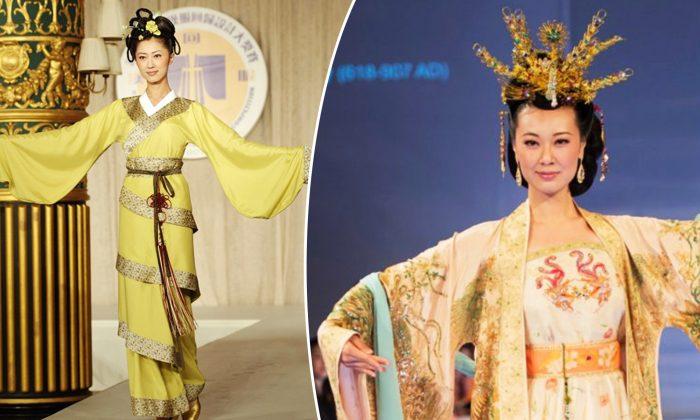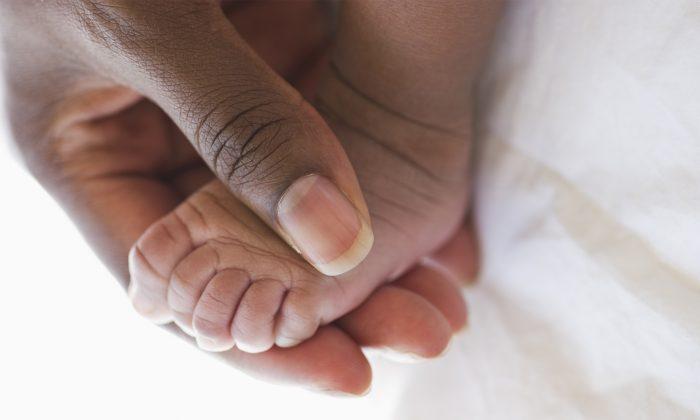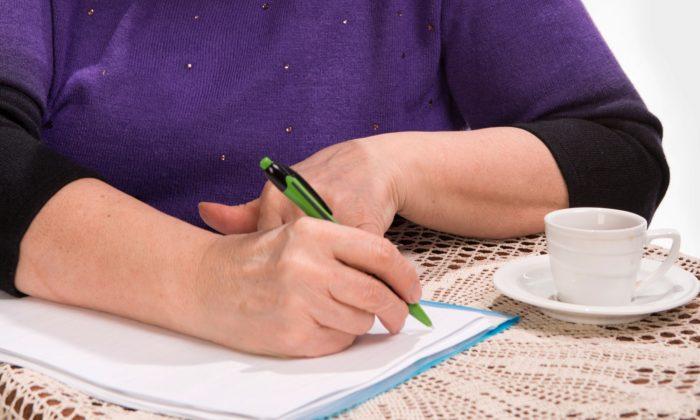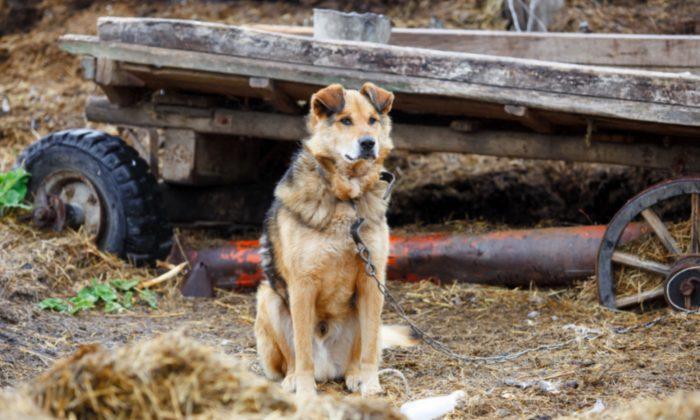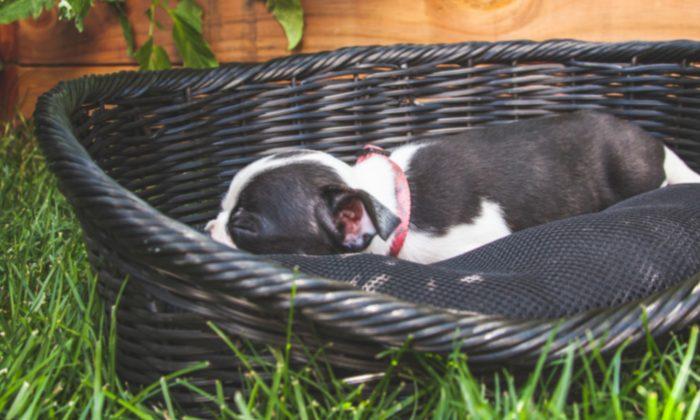China, with its 5,000 years of civilization, was once known as “Shen Zhou,” which translates to The Divine Land. It was said that the deities passed down this rich culture from the heavens, including music, medicine, calligraphy, and beautiful attire.
Most people perceive the “qipao” to be the quintessence of traditional Chinese dresses, but in fact, the qipao is the traditional clothing of the Manchus, and not the Han Chinese. Moreover, the modern qipao is very different from the traditional version.
The Han race is the largest ethnic group in China, and the Han have their own traditional clothing called “Hanfu,” or Han couture, which has been around for more than 3,000 years. Han couture almost disappeared following the Manchus taking power over China in 1644, when the Qing Dynasty was established.
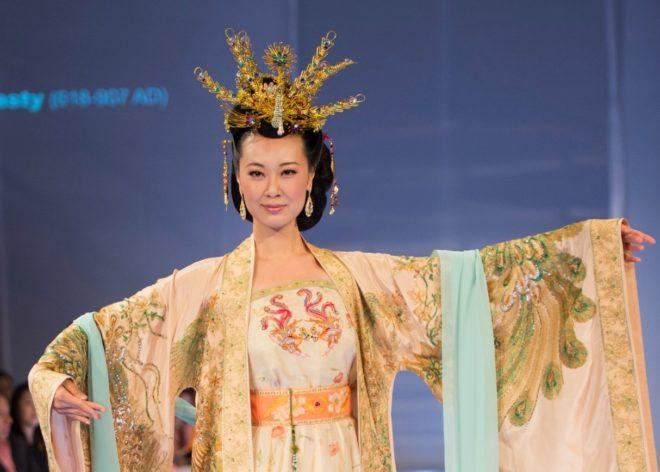
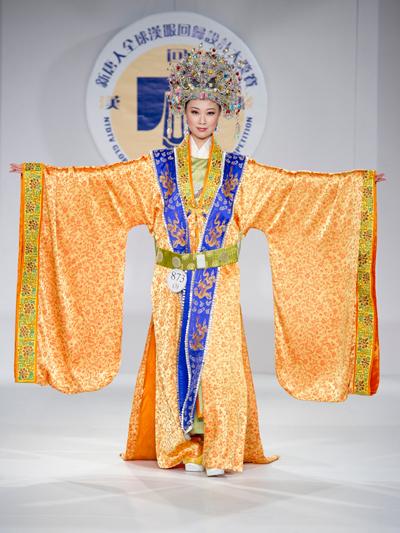
By observing Han couture, which includes prominent design styles from the prosperous Song Dynasty (960–1279 C.E.) to the magnificent Tang Dynasty (618–907 C.E.), one can appreciate each dynasty’s spirit embodied within. Han couture took on different styles with each dynasty due to the differences in cultural ideas and values.
Imagine traveling back in time by wearing the traditional clothes from China’s past dynasties. Would we be able to rediscover the nearly lost glorious culture that once flourished in the land of China, as well as the virtues that were prized dynasty after dynasty?
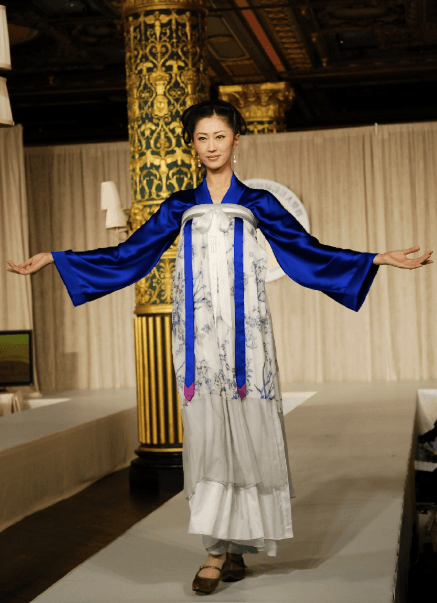
Envision yourself wearing one of the most popular classic dresses of the Tang Dynasty, the “Qi Xiong Ru Qun (齊胸襦裙),” in which the short shirt jacket is tucked inside the high-waisted skirt. The skirt is tied very high up on the chest and under the armpits.
With the big-sleeved shirt, and the skirt that flows gracefully down from the chest, it produces both a majestic and slimming effect, making one look elegant and more slender.
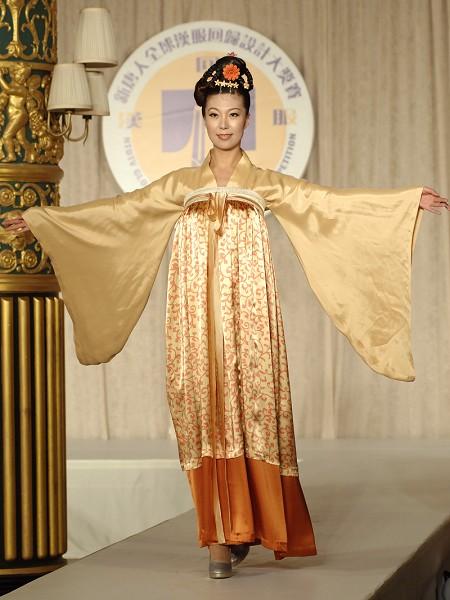
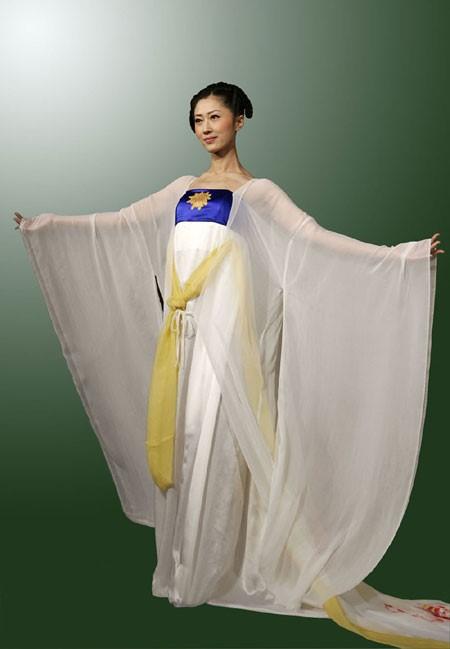
Influenced by Confucian ideas of propriety, the people of the Song Dynasty favored simpler, more reserved, and delicate styles with narrow sleeves.
Picture yourself donning a Song-style Ruqun 襦裙 dress, which consists of a blouse (襦, ru), a wrap-around skirt (裙, qun; also called 裳, chang), and Beizi 褙子, and a knee-length outer jacket with a straight collar.
The pleated skirt looks very feminine, and the soft, delicate pattern exudes a quiet and refined charm.
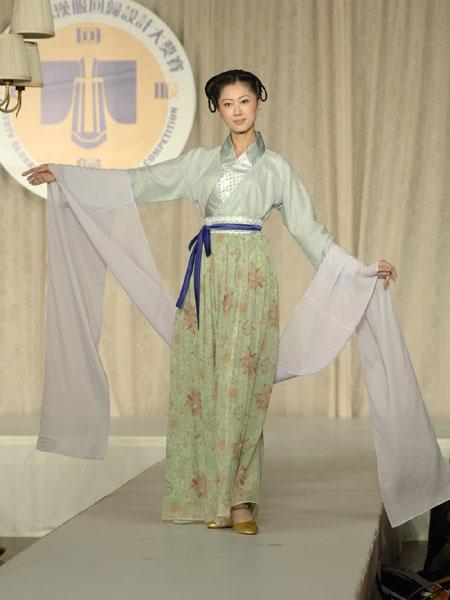
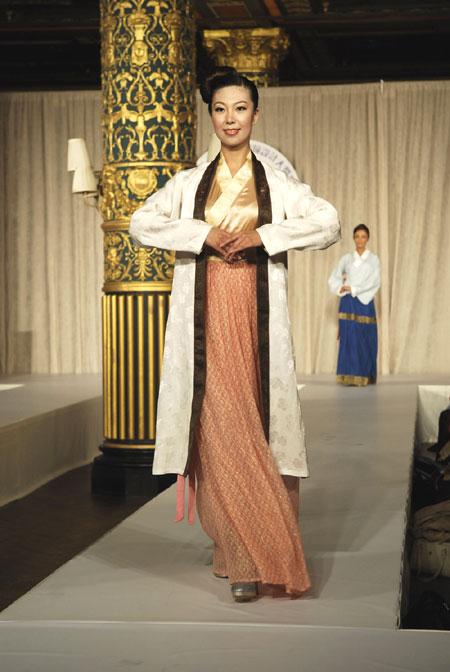
During the Ming Dynasty (1368 to 1644 C.E.), dignified, subdued fashion was preferred.
Ming Dynasty clothing was influenced by the Mongol-led Yuan Dynasty.
Thus, while putting on the prominent dressing of the Ming Dynasty, the “Ao Qun (襖裙),” in which a loose and billowing shirt is tucked outside an embroidered skirt with pleats, (unlike previous dynasties), you’ll feel it resembles the Korean Hanbok.
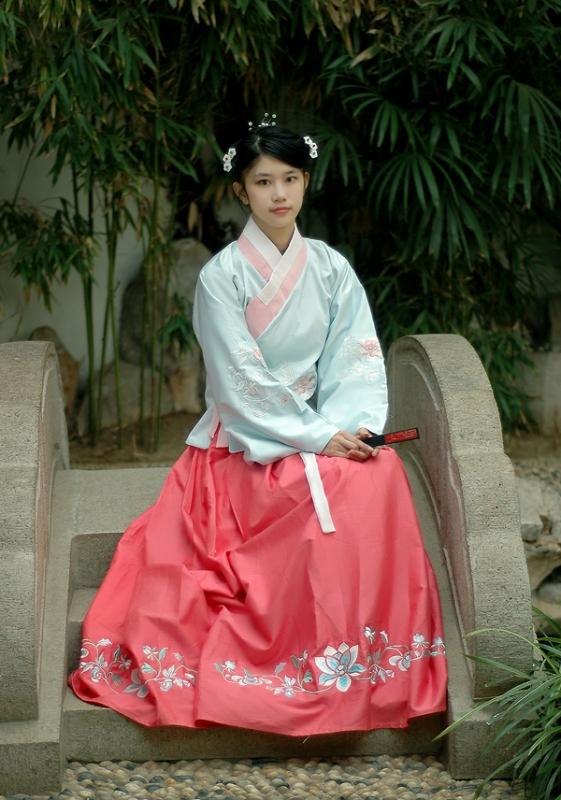
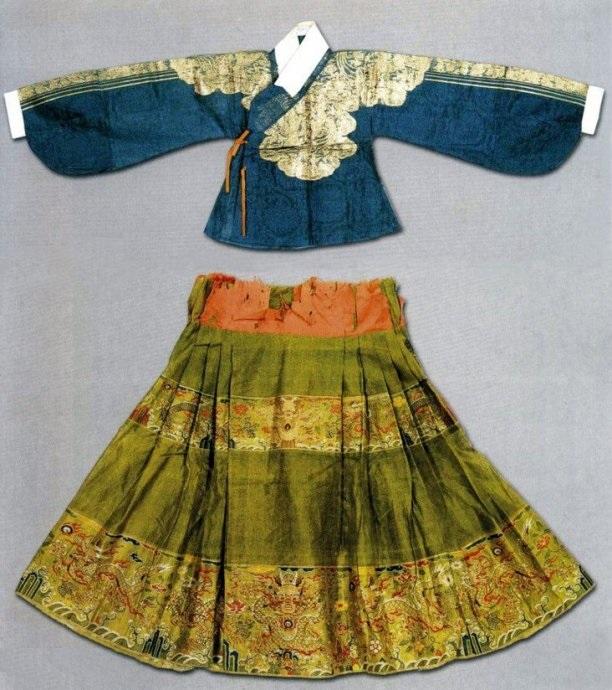
In traditional Chinese men’s attire, hats defined a man’s status, and robes were made for every occasion.
Scholars and officials wore high hats. Also, their sleeves were wider and the “yi” (a narrow-cuffed, knee-length tunic), was fastened with a wide belt adorned with jade ornaments.
The higher the status, the more complex and flamboyant the garments, and the more ornaments they displayed in their attire.
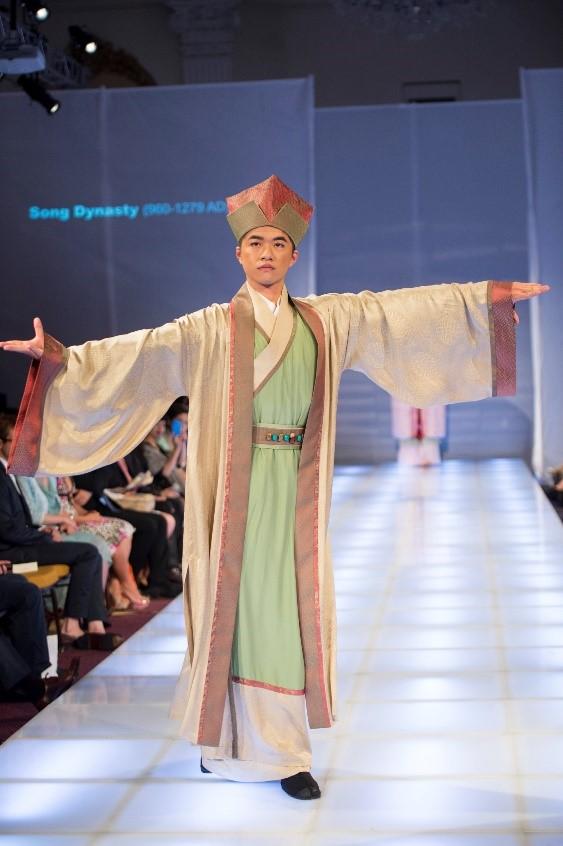
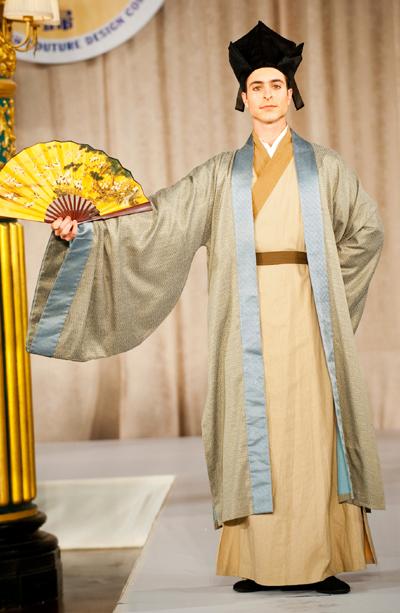
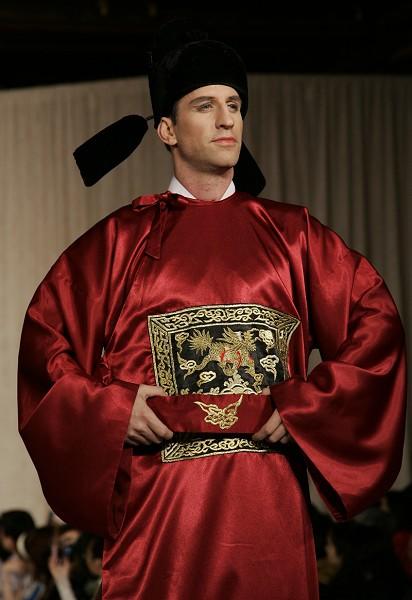
Though each dynasty had its unique styles, its basic style and characteristics remained the same.
Han couture generally includes a jacket for the upper garment (上衣) and an ankle-length skirt for the lower garment (下裳), and the collar was always folded over to the right (交領右衽 Jiao Ling You Ren), implying the harmonizing of Yang (positive force) over Yin (negative force).
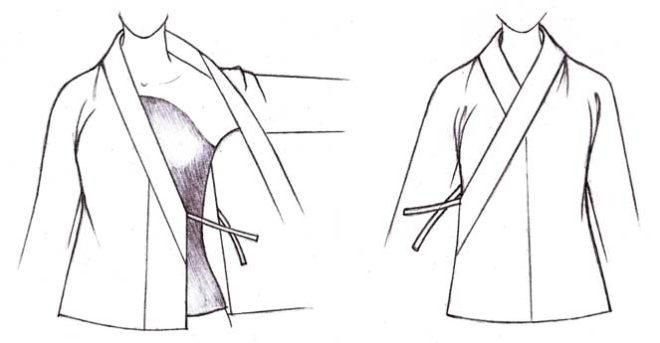
Interestingly, each aspect of Han couture has its inner meanings.
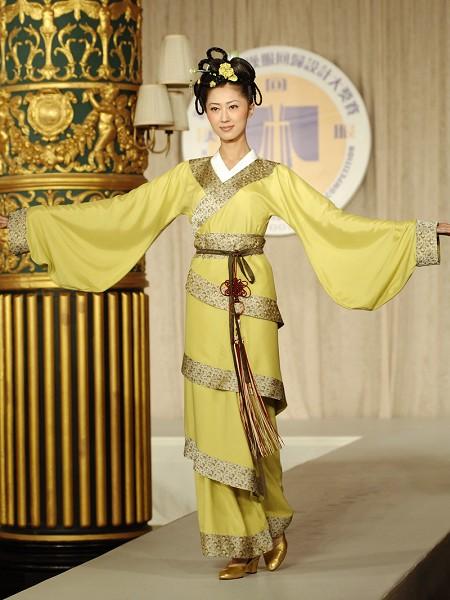
You may have already felt so yourself, and that is, an outfit can change a person from the outside in.
There’s no denying that these timeless garments, inspired by the divine, will bring about an air of refinement, graciousness, and dignity in the wearer.

